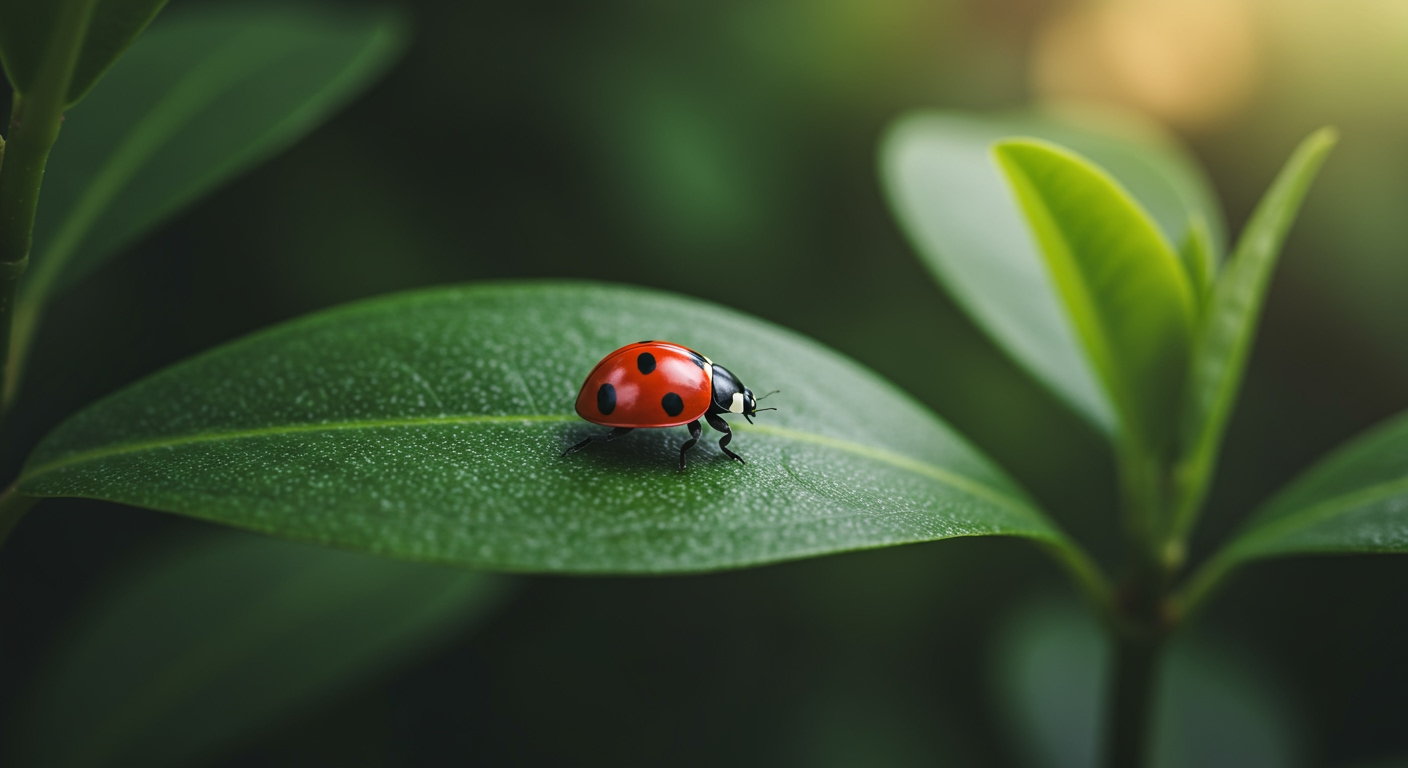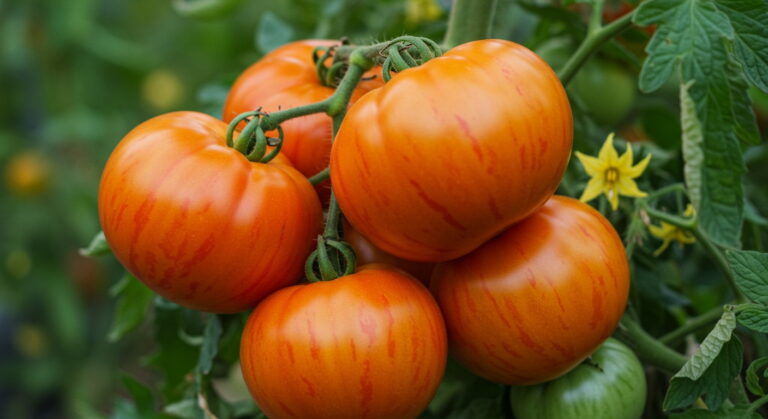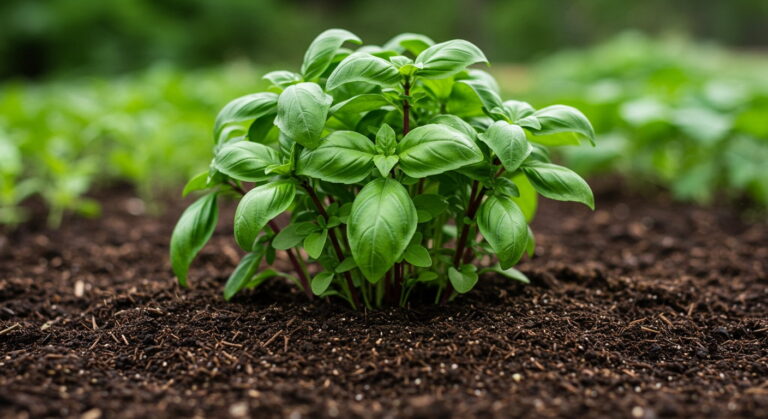Helpful Insect
The Unsung Heroes of the Garden: Understanding Helpful Insects
In the intricate tapestry of a garden ecosystem, not all insects are foes. While many gardeners instinctively reach for pesticides at the first sight of an insect, a vast and often overlooked community of beneficial insects plays a crucial role in maintaining ecological balance and fostering a thriving environment. These helpful allies perform essential services, from controlling pest populations to facilitating plant reproduction and enriching soil health. Recognizing and supporting these invaluable garden inhabitants is a cornerstone of sustainable and organic gardening practices, transforming a simple patch of land into a resilient, self-regulating ecosystem.
This comprehensive guide delves into the diverse world of helpful insects, categorizing them by their primary functions within the garden. Understanding their life cycles, dietary preferences, and habitats allows gardeners to strategically cultivate an environment that attracts and sustains these natural partners, significantly reducing reliance on chemical interventions. By embracing these tiny guardians, gardeners can foster a more vibrant, productive, and environmentally sound green space.
Predatory Insects: Nature’s Pest Controllers
Predatory insects are the frontline defense against common garden pests. They actively hunt, capture, and consume other insects, keeping populations of aphids, mites, caterpillars, and other destructive species in check. Encouraging a diverse population of these biological control agents is one of the most effective strategies for natural pest management.
Lady Beetles (Ladybugs)
Perhaps the most recognizable of beneficial insects, lady beetles (often called ladybugs) are celebrated for their insatiable appetite for soft-bodied pests. Both the adult beetles and their larvae are highly effective predators.
- Appearance: Adult lady beetles are typically round or oval-shaped, often red or orange with black spots, though variations exist. Their larvae resemble tiny, spiny alligators, often grey or black with orange or yellow markings.
- Prey: Lady beetle larvae are voracious eaters, consuming hundreds of aphids, mealybugs, scale insects, whiteflies, and mites during their developmental stages. Adults also feed on these pests and pollen.
- Life Cycle: Lady beetles lay tiny, yellow-orange eggs in clusters on the undersides of leaves, often near aphid colonies. The larvae hatch, feed for several weeks, pupate, and then emerge as adults.
Lacewings (Green and Brown)
Known for their delicate appearance, adult lacewings give little hint of the fierce predatory nature of their larvae, often called “aphid lions.”
- Appearance: Adult green lacewings have slender, pale green bodies, long antennae, and distinctive gold eyes, with large, transparent, veined wings. Brown lacewings are similar but darker. Larvae are greyish-brown, alligator-like, with prominent pincer-like jaws.
- Prey: Lacewing larvae are generalist predators, devouring aphids, thrips, mites, whiteflies, leafhoppers, small caterpillars, and insect eggs. Some adult lacewings also feed on pollen, nectar, and honeydew, while others are predatory.
- Life Cycle: Green lacewing adults lay their eggs on silken stalks, often on the undersides of leaves, providing protection from other predators. Brown lacewings lay their eggs directly on leaves without stalks.
Syrphid Flies (Hoverflies)
Often mistaken for small bees or wasps due to their black and yellow striped bodies, syrphid flies (or hoverflies) are important pollinators in their adult stage, but their larvae are formidable pest controllers.
- Appearance: Adult syrphid flies are excellent mimics, with patterns resembling bees or wasps but possessing only two wings (true flies have two) and short, stubby antennae. Their larvae are legless, slug-like creatures, often green or brown.
- Prey (Larvae): Syrphid fly larvae primarily feed on aphids, consuming large numbers in a short period. They also prey on thrips, small caterpillars, and other soft-bodied insects.
- Life Cycle: Adults lay single, oval, white eggs directly within aphid colonies. The larvae hatch and consume pests for a week or two before pupating.
Minute Pirate Bugs
These tiny, inconspicuous insects are remarkably effective predators despite their small size.
- Appearance: Minute pirate bugs are less than 1/5 inch long, flattened, and typically black and white.
- Prey: Both adult and nymph minute pirate bugs are generalist predators that feed on a wide range of small pests, including thrips, spider mites, aphids, whiteflies, and insect eggs. They use their piercing-sucking mouthparts to extract fluids from their prey.
- Adaptability: They are found in many garden habitats and are particularly effective against thrips, often before pest populations become noticeable.
Assassin Bugs
A diverse family of predatory insects, assassin bugs are formidable hunters in the garden.
- Appearance: Assassin bugs vary greatly in size, shape, and color, but most have a distinctive narrow head, prominent eyes, and a robust, piercing-sucking proboscis (beak) that folds back under their body.
- Prey: They are generalist predators, ambushing and capturing a wide array of insects, including caterpillars, leafhoppers, aphids, beetles, and even other larger insects. Some species are known to prey on slugs and snails.
- Hunting Strategy: They typically hide in foliage and wait for unsuspecting prey, then strike quickly with their piercing mouthparts, injecting venom to paralyze and digest their victims.
Ground Beetles
Often overlooked because of their nocturnal habits and secretive nature, ground beetles are invaluable cleanup crews and pest controllers.
- Appearance: Most ground beetles are dark, shiny, and flattened, ranging from tiny to over an inch long. Many species are fast-moving when disturbed.
- Prey: Both adult and larval ground beetles are significant predators of slugs, snails, cutworms, cabbage maggots, root maggot larvae, and various caterpillars, especially those that spend time on or in the soil.
- Habitat: They thrive in areas with mulch, leaf litter, and undisturbed soil, which provide shelter and hunting grounds.
Praying Mantises
Iconic and captivating, praying mantises are often seen as symbols of beneficial insects, though their role in pest control is somewhat more nuanced.
- Appearance: Mantises are large, distinctively shaped insects with powerful forelegs folded in a “praying” position, used to snatch prey.
- Prey: While they do eat garden pests, they are indiscriminate predators and will consume any insect they can catch, including other beneficial insects, pollinators, and even small lizards or frogs.
- Consideration: While fascinating, releasing mantis egg cases for pest control is not always the most targeted or effective strategy, as they do not distinguish between beneficial and harmful insects.
Parasitoid Insects: The Silent Assassins
Unlike predators that consume multiple prey, parasitoids lay their eggs on, in, or near a host insect. The developing parasitoid larva then consumes the host, ultimately killing it. This highly specialized form of biological control is incredibly effective and often goes unnoticed.
Parasitic Wasps
This is a vast and diverse group of tiny wasps, often overlooked due to their minute size, but they are among the most effective biological control agents.
- Appearance: Most parasitic wasps are tiny, often less than 1/4 inch long, and many are solitary. They come in various colors, though many are black or metallic.
- Target Hosts: Different species of parasitic wasps specialize in specific hosts, including aphids, caterpillars, whiteflies, scale insects, mealybugs, beetle larvae, and insect eggs.
- Mechanism: The adult female wasp locates a suitable host and injects an egg into or onto it. The hatched larva then feeds internally, eventually emerging from the mummified or dead host. For example, braconid wasps parasitize aphids, turning them into “aphid mummies,” or attack caterpillars like tomato hornworms. Ichneumon wasps target larger caterpillars, while chalcid wasps parasitize various insect eggs and larvae.
Tachinid Flies
Another family of flies that provides significant pest control services, tachinid flies are also parasitoids.
- Appearance: Adult tachinid flies are typically bristly, grey or black, and resemble houseflies, but are often larger.
- Target Hosts: These flies are important parasitoids of a wide range of serious garden pests, including many species of caterpillars (e.g., armyworms, cutworms, loopers, corn earworms), beetle larvae (e.g., Japanese beetle larvae), and adult squash bugs.
- Mechanism: Female tachinid flies lay their eggs directly on or near the host insect. The larvae burrow into the host and feed internally, ultimately leading to the host’s death. You might spot a small white egg glued to the head or body of an unfortunate caterpillar, a tell-tale sign of tachinid activity.
Pollinators: The Architects of Abundance
Pollinators are essential for the reproduction of many flowering plants, including a significant portion of our food crops. Without them, fruits, vegetables, and seeds would not form, severely impacting garden productivity and ecosystem health. Insects are the primary group of animal pollinators.
Bees
Bees are arguably the most important group of pollinators, with thousands of species playing vital roles.
- Honeybees: Famous for their organized colonies and honey production, honeybees are highly efficient generalist pollinators of a vast array of crops and wild flowers.
- Bumblebees: Larger and hairier than honeybees, bumblebees are excellent pollinators, particularly effective at “buzz pollination” (sonication) for plants like tomatoes, blueberries, and cranberries. They can forage in cooler temperatures than honeybees.
- Solitary Bees: This diverse group includes mason bees, leafcutter bees, and mining bees. Unlike honeybees and bumblebees, solitary bees do not live in colonies; each female builds her own nest. They are incredibly efficient pollinators, often outperforming honeybees for certain crops, and are generally non-aggressive.
Butterflies and Moths
While often admired for their beauty, butterflies and moths are also important pollinators, especially for flowers with long, tubular shapes.
- Butterflies: Active during the day, butterflies typically visit brightly colored, fragrant flowers with large landing platforms. They sip nectar with their long proboscises, transferring pollen between flowers.
- Moths: Nocturnal pollinators, moths are attracted to pale or white flowers that emit strong fragrances at night. They play a critical role in pollinating many night-blooming plants.
Other Pollinators
Beyond bees and butterflies, numerous other insect groups contribute significantly to pollination.
- Flies: Besides syrphid flies, many other fly species, including small dung flies, blowflies, and flesh flies, visit flowers for nectar and pollen, particularly those with strong or even unpleasant odors (e.g., carrion flowers).
- Beetles: Some beetles, especially scarab beetles and flower beetles, feed on pollen and nectar, inadvertently transferring pollen as they move from flower to flower. They are considered primitive pollinators.
- Wasps: While some wasps are predatory, many species also visit flowers for nectar and pollen, acting as incidental pollinators.
Decomposers: The Garden’s Recycling Crew
Decomposer insects play a vital role in breaking down organic matter, returning essential nutrients to the soil, and improving soil structure. This process is fundamental to soil fertility and the overall health of the garden ecosystem.
Dung Beetles
These remarkable insects are best known for their role in breaking down animal waste, but their activities extend to other decaying organic matter in the garden.
- Function: Dung beetles break down and bury animal feces, enriching the soil with nutrients and improving aeration. This process also reduces pest breeding grounds and disease transmission.
- Ecological Impact: Their burrowing activities enhance water penetration and reduce compaction, contributing to healthier soil structure.
Springtails
These tiny, primitive insects are abundant in soil and leaf litter, often going unnoticed due to their small size.
- Function: Springtails feed on decaying plant material, fungi, and bacteria, breaking them down into simpler forms that are more readily available to plants.
- Indicators: Their presence is often an indicator of healthy, biologically active soil, playing a crucial role in nutrient cycling at a microscopic level.
Ants
Ants have a complex role in the garden, sometimes acting as pests (e.g., farming aphids), but many species are beneficial decomposers and seed dispersers.
- Decomposition: Many ant species collect dead insects, scavenge food scraps, and process decaying plant matter, contributing to the decomposition cycle.
- Soil Aeration: Their tunneling activities help aerate the soil and improve water infiltration.
- Seed Dispersal: Certain ant species aid in the dispersal of seeds, particularly those with elaiosomes (fatty appendages), contributing to plant propagation.
Attracting and Sustaining Beneficial Insects
Creating a hospitable environment for helpful insects is the most effective way to leverage their services. A thriving population of beneficials reduces the need for chemical interventions and promotes a resilient garden ecosystem.
Provide Diverse Habitat
Beneficial insects need more than just food; they require shelter, nesting sites, and places to overwinter. A diverse garden provides these necessities.
- Native Plants: Incorporate a variety of native plants, which often provide better food sources and habitat for local insect populations.
- “Insectary” Plants: Plant specific flowers known to attract beneficials. Many predatory and parasitoid insects, especially in their adult stages, feed on nectar and pollen from small, open flowers. Examples include dill, fennel, cilantro, parsley, sweet alyssum, cosmos, marigolds, and sunflowers.
- Ground Cover and Mulch: Leave some areas undisturbed with mulch, leaf litter, or ground cover to provide shelter for ground beetles, spiders, and other beneficials.
- Brush Piles: A small brush pile can offer nesting and overwintering sites for various insects.
- Insect Hotels: Consider adding insect hotels for solitary bees and lacewings, offering tubes and crevices for nesting.
Offer Nectar and Pollen Sources
Many adult beneficial insects, even predators and parasitoids, rely on nectar for energy and pollen for protein to lay their eggs. A continuous bloom of appropriate flowers is vital.
- Succession Planting: Plant flowers that bloom at different times throughout the growing season to ensure a continuous food supply.
- Flower Diversity: Offer a variety of flower shapes, sizes, and colors to attract a broad spectrum of beneficial insects. Small, clustered flowers (umbel-shaped, like dill or Queen Anne’s Lace) are particularly attractive to tiny wasps and hoverflies.
- Avoid Double Flowers: Flowers with too many petals often make nectar and pollen inaccessible to insects. Opt for single-petal varieties.
Ensure Water Sources
Like all living creatures, insects need water. Shallow water sources can be crucial, especially during dry periods.
- Shallow Dishes: Provide shallow dishes or bird baths with pebbles or marbles for insects to land on and drink safely without drowning.
- Mud Puddles: Some insects, particularly butterflies, gather essential minerals from moist soil or shallow mud puddles.
Minimize Pesticide Use
Pesticides are indiscriminate and often kill beneficial insects along with pests, disrupting the natural balance of the garden.
- Avoid Broad-Spectrum Pesticides: These chemicals kill nearly all insects on contact, eliminating beneficial populations and creating “pest vacuums” where pest populations rebound quickly without natural enemies.
- Use Targeted Treatments: If pest control is absolutely necessary, opt for highly targeted treatments, such as horticultural oils or insecticidal soaps, applied directly to pests, or use biopesticides with specific modes of action.
- Time Applications Carefully: If using any pesticide, apply it when beneficials are least active (e.g., late evening) and avoid spraying flowering plants where pollinators forage.
Practice Integrated Pest Management (IPM)
IPM is a holistic approach that combines various strategies to manage pests while minimizing environmental impact and promoting beneficial organisms.
- Monitoring: Regularly inspect your plants for signs of pests and beneficial insects. Early detection allows for less intensive interventions.
- Cultural Controls: Use practices like crop rotation, proper plant spacing, and sanitation to prevent pest outbreaks.
- Physical Barriers: Employ row covers or hand-picking for specific pests.
- Biological Controls: Actively encourage and introduce beneficial insects as the primary pest management strategy.
Identifying Beneficial Insects: A Gardener’s Guide
Learning to recognize the helpful insects in your garden is crucial for their protection and for informed pest management decisions. While some, like lady beetles, are easily spotted, many beneficials are small, camouflaged, or have life stages that look very different from their adult forms.
- Observation: Spend time observing your garden. Look closely at leaves, stems, and flowers for movement, eggs, or distinctive patterns.
- Larval Stages: Many beneficial insects are most effective as larvae, which often look nothing like the adults. Learn to identify lacewing larvae (“aphid lions”) or syrphid fly larvae.
- Resources: Utilize field guides, online resources, and local extension services for identification. Photos and detailed descriptions can help distinguish beneficials from pests.
- Be Patient: It takes time to develop an eye for these creatures. With practice, you’ll soon be able to confidently identify your garden’s natural allies.
Common Misconceptions and Best Practices
Understanding and integrating helpful insects requires dispelling some common myths and adopting best practices for their long-term support.
- Not All Bugs are Bad: The most significant misconception is that all insects are pests. This article highlights the vast majority that are either neutral or actively beneficial. A diverse insect population is a sign of a healthy ecosystem.
- Patience is Key: Biological control is rarely an instant fix. It takes time for beneficial populations to establish and for their impact on pests to become evident. Avoid immediate intervention with pesticides at the first sign of a pest.
- Attracting vs. Releasing: While releasing beneficial insects can provide an initial boost, sustaining them long-term is best achieved by creating an attractive habitat rather than relying solely on repeated releases. Purchased beneficials may simply fly away if the environment is not suitable.
- Embrace a Little Imperfection: A truly healthy garden ecosystem often tolerates a certain level of pest presence. A small number of pests is necessary to provide a food source for beneficial insects, ensuring their continued presence. Aim for balance, not complete eradication.
Conclusion: Cultivating a Thriving Ecosystem
Embracing helpful insects is not merely an optional strategy for the environmentally conscious gardener; it is a fundamental shift towards a more sustainable, resilient, and inherently more beautiful way of gardening. By recognizing the invaluable roles played by predators, parasitoids, pollinators, and decomposers, we move beyond a paradigm of constant battle against nature to one of collaboration and harmony.
Creating a garden that actively welcomes and supports these tiny allies involves thoughtful plant selection, providing diverse habitats, minimizing chemical inputs, and adopting an observational, patient approach. The rewards extend far beyond pest-free plants; they include increased biodiversity, improved soil health, greater yields, and the profound satisfaction of cultivating a vibrant, self-sustaining ecosystem. By fostering these unsung heroes, gardeners contribute not only to their own plots but to the broader health of our planet, one small, buzzing, crawling life at a time.



